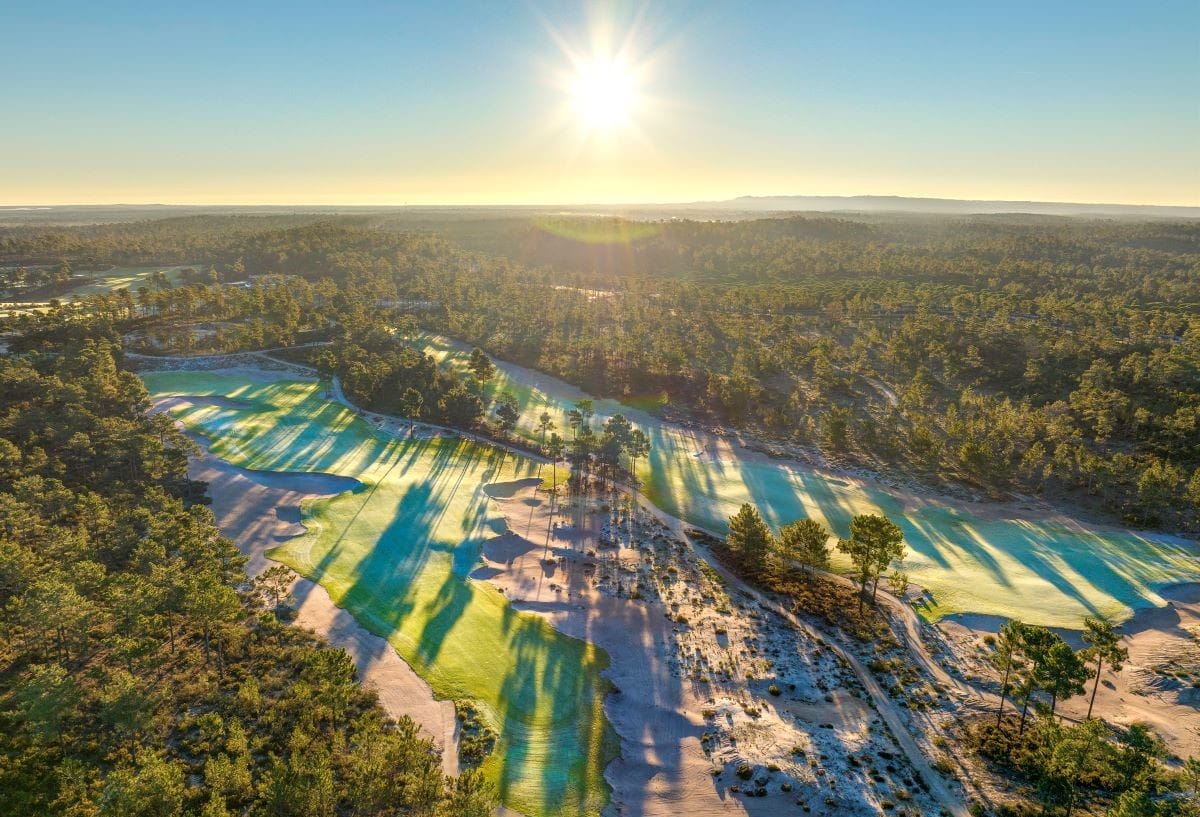As The Dunas Course at Terras da Comporta opens its doors to the public from today (June 1), David McLay-Kidd believes it’s a first for golf in southern Europe and different to any other golf-design project that has ever been built in the region.
The world-acclaimed golf architect has partnered with Vanguard Properties – the largest real estate developer in Portugal – to launch his first golf course in mainland Europe, with the layout available to play for the first time from the start of this month.
Situated one hour south of Lisbon, The Dunas Course has been created over 84 hectares of natural, sandy terrain on the coast in a secluded setting on the edge of the Sado Estuary Nature Reserve.
McLay-Kidd first started work on the par-71 links course in 2008 before experiencing a series of delays, and believes there is no other course like it in southern Europe after flying in from his home in the United States to give his personal seal of approval to the eagerly-awaited project.
“I think after 15 years of effort, we are actually there. There’s now no pandemic and no worldwide recession,” said McLay-Kidd, whose other famous designs include Bandon Dunes, Queenwood, Beaverbrook, Machrihanish Dunes and the Castle Course at St. Andrews.

“I first came here in 2008 and it’s absolutely stunning. If you look at any top 100 list, it is peppered by golf courses that are through pine, barren sand dunes – from the courses in Melbourne, Australia, to the courses in Long Island in the US and the stuff around the British and Irish coastline, they are generally through sand and through vegetation, and so here we are in southern Europe in Portugal with exactly that type of terrain, and yet no golf course has really capitalised on that. This is a massive opportunity for golf to build something that is unique in southern Europe.
“I’ve been asked how I would characterise the course and I would say it’s easy to categorise, it’s a links course. It’s not links-style, it’s not links-like, it’s a links course. You’re playing as close to the beach as you can get in Portugal, you’re in pure sand, you’re playing on fescue grass with a golf course that wants you to read the ground, bounce the ball and run it around, using the contours to your advantage, so I don’t know if there’s anything out there that wouldn’t tick the box as a links course as a definition that a Scotsman would give you.
“The thing that is really great for me is that this is open to the public. I get to build courses but, more often than not, they are very, very private and no one gets to see them, so being able to build something like this that’s unique, so natural and is open to all at a reasonable price is great. I’m hoping that the course will fill with golfers quickly and be a showcase for links golf in southern Europe.”
The Dunas Course is one of two 18-hole championship layouts that is planned at the multi-million euro Terras da Comporta development. The layout opened to the public for play for the first time on June 1, with the official course inauguration set to take place at the beginning of October.
McLay-Kidd was joined at in Portugal last month by a group of leading golf media from the UK, Ireland and Europe. As well as playing the course, the journalists had the the opportunity to a few holes alongside McLay-Kidd and they were united in their praise for the new layout, labelling it as one of the new stars of European golf.

Adam Lawrence, editor of Golf Course Architecture magazine, said: “I first saw Dunas during the original build back in 2014. The course was not quite finished, but it was clear to me that it would be the best in Portugal the day it opened. Nine years on, I’m glad to be able to confirm that my original judgment was right. The Dunas Course is very special, and like nothing else in Europe. It will, deservedly, occupy a very high place in rankings of the continent’s finest courses.”
Jim McCann, editor of the Top 100 Golf Courses website, said: “Looking at various aerial images of The Dunas Course beforehand, I imagined the terrain would probably be quite flat but I was completely wrong. The Terras da Comparta property occupies a prime coastal location in a rolling, forested landscape with pure sand everywhere you turn. Over the last few years, I’ve been lucky enough to visit a number of new-build golf projects in continental Europe and this one is right up there with the very best of them.”
Vanguard Properties, the largest real estate developer in Portugal, took ownership of the spectacular Terras da Comporta development in 2019 and the site features two plots: Torre, comprising 365 hectares of land in the Alcácer do Sal municipality, and Dunas, which occupies around 1,011 hectares of land in the Grândola municipality.
Complementing The Dunas Course will be a new clubhouse and golf academy. Away from the fairways, an array of lifestyle activities will be available including horseriding, wellness and sailing, with a wide range of plots for hotels, tourist and residential condominiums also on offer.
To book a round on The Dunas Course, email golf@comporta.com and for more information, visit www.comporta.com
























Leave a comment